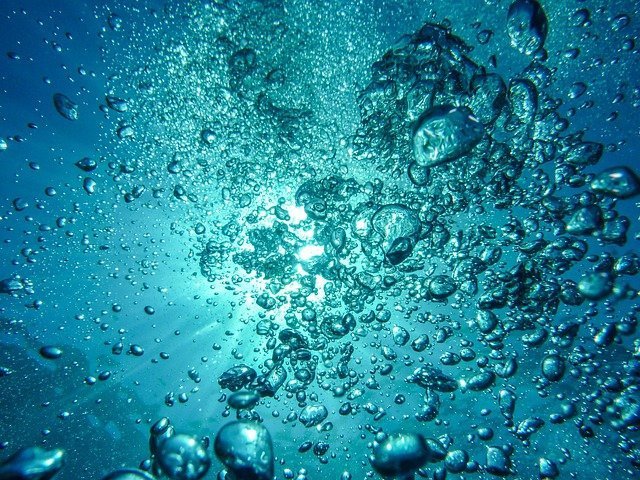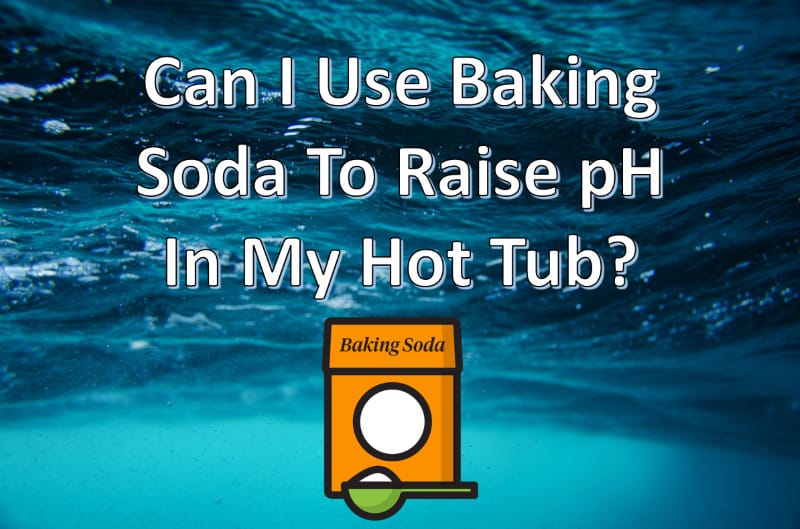Can I use baking soda to raise the pH in my hot tub?
Yes, you can use baking soda to raise the pH in your hot tub. However, it takes a significant amount of baking soda to achieve the desired effect of increasing pH in a spa. You can try adding 1 tablespoon per 100 gallons and see if it makes a difference. Using a pH increaser would be more effective in raising pH.
Stop wasting time and money with hot tub maintenance and confusing water chemistry! The Hot Tub Handbook and Video Course will help keep your hot tub balanced, sanitized, and crystal clear all the time.
Check out my list of high-quality hot tub products to help keep your hot tub clean and running great all year long!
My recommended product to help you test your hot tub or pool water for accurate pH, alkalinity, bromine, and chlorine readings is the AquaCheck Trutest Digital Reader.
pH, short form for Potential Hydrogen, measures acidity or alkalinity of water on the pH scale.
There are many methods that you can use to raise the pH of your hot tub water, and this is why you could be wondering, “Can I Use Baking Soda To Raise The pH In My Hot Tub?”
The idea is to have the pH of your hot tub water at or in the range of 7.4 and 7.6.
If the value is outside these ranges, your water requires immediate attention because it might result in undesirable side effects on the users or the hot tub components.
Balancing the chemistry of your hot tub water is a crucial part of maintenance.
Let’s get started!
Can I Use Baking Soda To Raise The pH In My Hot Tub?
You can use baking soda to raise the pH of your hot tub water, but this method is disadvantageous because you will need to use so much of the product to achieve any significant change in your pH value. Alternative pH boosters will be required in much lower amounts for a substantial change in your hot tub’s pH.
Still, baking soda is advantageous over these other options because other options can cause severe burns to your skin when you are adding them to the water.
They can also leak and spill on the storage area, where they can cause corrosion. Therefore, baking soda could be an ideal option to raise the pH if available an inadequate supply.
Is Baking Soda The Best Way To Raise The pH In My Hot Tub?
No, baking soda is not the best way to raise pH. The best way is to use chemicals called pH increase. Add one cap of the pH increaser, let the hot tub mix for a couple of hours, and test the water again. Soda ash is used as a quick solution to raise pH as well.
From experience, I can tell you that there are other much better alternatives than baking soda. However, some will prefer baking soda over and over again.
Indeed, I would choose magnesium oxide or soda ash because it works better than baking soda in raising pH in the hot tub. Besides, it works on alkalinity more than the pH, meaning better results.
But you must be careful when using soda ash because it might raise the pH above the recommended levels.
I always recommend taking a sample of your hot tub water for testing to decide the amount of change needed on the pH.
Low or high pH levels increase the chance of getting exposure to bacteria that can cause legionnaires disease or hot tub folliculitis.
Scale can also grow in your hot tub water. Unfortunately, it can also become cloudy or cause irritation, itchiness, and reddening of your skin and eyes.
You can also find many other products designed for this specific purpose online. However, you need proper protection on your hands to prevent potential burns in handling.
The products designed to raise the pH levels of a hot tub are much more efficient and required in small quantities.
Need baking soda, here it is!

Stop wasting time and money with hot tub maintenance and confusing water chemistry! Get Instant access to this easy-to-use book and video course so you can spend less time cleaning and more time soaking.
Learn MoreIs It Safe To Put Baking Soda In A Hot Tub?
Yes, baking soda will help to raise the pH of your hot tub naturally without the need to use extra chemicals. The responsible use of baking soda will involve adding 1 oz of the product at a time.
You’re probably unsure whether adding baking soda to your hot tub is safe because you want to raise the pH. I have seen that you can add baking soda to the hot tub to keep the pH in the range of 7.2 and 7.6.
The dosage is recommended if you make a slight adjustment to the pH. I would not recommend adding too much baking soda because it can take the pH levels higher than the recommendation, defeating the purpose.
After adding 1 oz of the baking soda, leave the hot tub water to circulate for 2 to 3 hours. You should then test the pH to determine within the recommended parameters.
If the pH is still lower, you should add one more baking soda and repeat the process after two or three hours until it reaches the recommended levels.

What Can I Use To Raise The pH In My Hot Tub?
There are two main ways to raise the pH level in a hot tub. The first way is to use chemicals called pH increase. Add 1 cap of the pH increaser, let the hot tub mix for a couple of hours, and test the water again. Soda ash is used as a quick solution to raise pH. The second way is to add fresh water to the spa.
I have seen that you can use baking soda to raise pH in your hot tub. But this is not the only option you have because soda ash is also available to naturally help you accomplish the same purpose.
Most hot tub users prefer soda ash because it has a higher pH value of 11.4, which exceeds that of baking soda. As a result, its effect on the pH is drastic when added to a hot tub.
Soda ash will also raise the water’s total alkalinity more than baking soda, which is another reason that increases its effectiveness. However, it is essential to note that you can’t raise the pH without alkalinity and vice versa.
When alkalinity is in question, it is essential to ensure that it does not go outside the range of 80 and 120ppm. Baking soda could be used where these values are close to the boundary because adding soda ash might take them higher than recommended.
Alkalinity plays a critical role in maintaining suitable pH by acting as a buffer to prevent fluctuation. Conversely, the absence of proper total alkalinity in the hot tub water causes erratic change by dropping or peaking.
For example, it could test alkaline in one minute and acidic in another. This is why you need to understand the significance of using soda ash to stabilize the total alkalinity while raising the pH values of your hot tub water.
Our recommended product to raise pH in hot tubs is Spa Essentials pH increaser Granules.
How Much Baking Soda Does It Take To Raise pH In A Hot Tub?
It takes 1.25 pounds of baking soda to change from a value of 7.2 to 7.6 for a 600-gallon capacity hot tub. Therefore, the amount of baking soda needed is not definite but variable with the water volume and the current pH of the hot tub.
The baking soda has a value of 8.4 on the pH scale, which is slightly above the neutral value of 7. I recommend using a test strip to check the pH value before adding the baking soda.
My previous use of baking soda to raise the pH of the hot tub showed that it causes a minimal value on change. Unfortunately, you will find yourself using so much baking soda to make any significant change in the pH values of a hot tub.
Interestingly, it will never exceed the value of the product itself, even if you never need such a high reading for your hot tub. Experts discourage relying so on baking soda for raining the pH of the hot tub but alkalinity.
How Much Baking Soda To Raise Alkalinity?
The amount of baking soda required is determined by the amount of water your hot tub can hold. If you want to increase the alkalinity, add 1 tablespoon of baking soda for every 100 gallons of water. A large hot tub of 700 gallons would use 7 tablespoons of baking soda.
Baking soda is beneficial for hot tub owners who wish to increase the alkalinity of their water. However, it doesn’t have specific instructions to increase the alkalinity levels and might leave the owners guessing.
An example is a pool whose total alkalinity reads 50 ppm and has a capacity of 20,000 gallons. In that case, you will need to raise the total alkalinity to 80 ppm as the minimum level.
The difference between the required and the current total alkalinity is 30 ppm. Rasing the ppm by 10 will require three pounds of baking soda because the pool’s capacity is 20,000 gallons. In hot tubs, you wouldn’t need to add this much.
You should add the baking soda directly into the hot tub and leave it to dissolve for about 2 to 3 hours when the pumps are running.
The time will allow proper mixing so that you can get accurate results upon testing again to determine whether more baking soda is needed.
It is always good to turn off the jets when testing and add the baking soda into the system.
To raise total alkalinity I recommend Spa Essentials Total Alkalinity Increaser.
Is Soda Ash Better Than Baking Soda To Raise Ph
Yes, soda ash is better than baking soda when raising the pH levels. Unlike baking soda with a pH value of 8.3, the pH of soda ash is 11.4. If you use baking soda on your hot tub whose pH is higher than 8.3, it will be lowered.
On the contrary, soda ash will drastically increase the pH levels but drastically raise the total alkalinity. On the contrary, baking soda does the exact opposite.
Thus, the biggest downside for soda ash is that it will usually raise the total alkalinity levels a lot. The magnesium oxide powder is the only compound I have known to increase the pH without significantly affecting the total alkalinity.
Although it raises the alkalinity slightly, it does not do so to the same degree as the soda ash.
Magnesium oxide powder is also available in high concentration, meaning that you will not need to use much of it like would be required with the soda ash. Instead, you will need about 2/3 as much magnesium oxide as you require to use soda ash.
This means that a quarter cup of magnesium oxide will be sufficient for an average hot tub size.
Of course, you can always add more, but it is good to be careful because adding excess will require adding something different to lower its levels.
Also, remember to turn on your jet for the pH to increase slightly because of aeration.
How Long To Wait After Adding pH Up To A Hot Tub?
After adding a pH up, you should wait for at least 2 hours to use your hot tub. The time will allow the chemical to work correctly and ensure that the water’s acidity levels are modulated. Although the idea pH levels of a hot tub are 7, 7.2 to 7.8 is practically recommended.
After the 2-hour duration expires, a test strip should check whether the correct pH level is attained. If not, add more of the pH-up product and give it another 2 hours before you can test again.
When your test strip shows a lower pH reading, you should know that the hot tub is quite acidic and could cause corrosion to the hot tub’s surface and components.
Besides, it can also make soaking uncomfortable for you and your loved ones. This is why you need to allow the pH-up compound enough time to work before testing to ascertain that the correct levels are reached.

Will Baking Soda Raise The Alkalinity In A Hot Tub?
The baking soda helps raise the hot tub’s alkalinity levels. To increase the alkalinity, you will need to add 1 tablespoon of baking soda in 100 gallons of hot tub water. For example, a hot tub containing 600 gallons of hot tub water will require 6 tablespoons of baking soda to bring alkalinity to the required levels.
Total alkalinity is a term that means the hot tub’s ability to resist sudden changes in the pH levels. The hot tub’s alkalinity plays a critical role in managing the water and ensuring that soaking is safe. The desirable alkalinity level for a hot tub is usually in the range of eighty and one hundred and twenty parts per million.
How Do I Raise The pH In My Hot Tub Without Raising Alkalinity?
The best way to raise your hot tub’s pH is to use Magnesium oxide powder because its impact on the alkalinity will be insignificant. You can also run the jets and other water features to naturally raise the pH of the hot tub through aeration without affecting alkalinity.
However, it is important to note that you cannot raise your hot tub’s pH significantly without affecting alkalinity even by a little value.
As such, you can only raise one by a huge margin and the other one a little based on the method you have adopted.
I would recommend that you check both the pH and the alkalinity before and after adding the selected chemical to ascertain that they are within the required levels.
What To Do If pH Is Low In A Hot Tub?
You should use a pH increaser because sodium carbonate is one of the key ingredients. Baking soda can also be used to raise pH to the desirable levels, but I recommend soda ash over baking soda because it will save your time adjusting the pH.
If the pH is low in a hot tub, the chorine can become inefficient. So no matter the amount of chlorine you add to a low pH hot tub, it won’t work.
Therefore, you’ll be subjected to the risk of bacterial, viral, or pathogen infections. Low pH can also damage your hot tub, where it could cause etching of the plater surfaces, cracking, and delamination of the shell.
It can also cause damage to the equipment responsible for running the hot tub, act as a breeding ground for algae and cause irritation to the bathers. You need to raise the pH to the appropriate levels for these reasons.
How To Raise pH In A Hot Tub Naturally?
You can use different approaches to raise your hot tub’s pH naturally. One of these methods is allowing aeration into the hot tub. Soda ash and baking soda can also be added to the hot tub to adjust the pH. Adding fresh tap water can also raise pH.
Similarly, you can use vinegar to raise the pH of a hot tub. Again, I recommend measuring and adding 4 cups of apple cider or household vinegar directly into the water.
It would be best to allow the pumps to run for a few hours and retest the water to ascertain that it has adjusted to the recommended levels.
Consider Using a Water Care Monitor
Monitoring the health of your hot tub can often be challenging if you are not testing the water on a regular basis. This can also be a problem if you go on holiday or you are unable to take care of your hot tub due to mobility issues.
A test system I highly recommend is the Exact Industrial Test System. This system is great for hot tubs and pools and gives your a highly accurate digital readout of your water chemistry compared to other methods.
The pHin Smart Water Care Monitor for pools, hot tubs, and inflatable spas continuously tests the water and alerts you when to add chemicals with the integrated mobile app.
This water care monitor also takes constant readings of the temperature inside your hot tub. This will give you peace of mind while away from your spa.
The mobile app will inform you when to add chemicals such as chlorine, and how much chemical is recommended. This is done by entering your hot tub or pool’s unique dimensions.
This mobile app is great if you’re wondering “does chlorine raise pH in a hot tub?” sometimes it’s not always clear.
Simply scan the bar code of any chemical brand and the pHin app will calculate how much chemical is to be added to the water. Most products and brands are recognized by the application.
The pHin device will sample water more than 1000 times per week to give you an accurate reading compared to using test strips.
The pHin device works with different water types including chlorine, bromine, and saltwater hot tubs, swim spas, inflatable hot tubs, and pools.
This unique device comes with a lifetime warranty to ensure your water remains clear and ready for you to use at all times.
Can I Use Baking Soda To Raise The pH In My Hot Tub: Conclusion

The pH of your hot tub is very crucial. So, if you have been wondering, “can I use baking soda to raise the pH in my hot tub?” then I confirm that you can.
However, baking soda has a pH reading of 8.3, meaning that it is not very practical to increase the pH of the water, but it works much better in improving alkalinity.
Better options include soda ash and magnesium oxide powder.
Magnesium oxide powder is by far the best. Experts recommend testing the pH before and after adding the pH up.
Immediately after adding the pH up, you should allow the pumps to run for about 2 hours before retesting the water.
I hope you found this article on raising pH using baking soda helpful.
Thanks for visiting spatoolkit.com
James Brockbank

Stop wasting time and money with hot tub maintenance and confusing water chemistry! Get Instant access to this easy-to-use book and video course so you can spend less time cleaning and more time soaking.
Learn More






